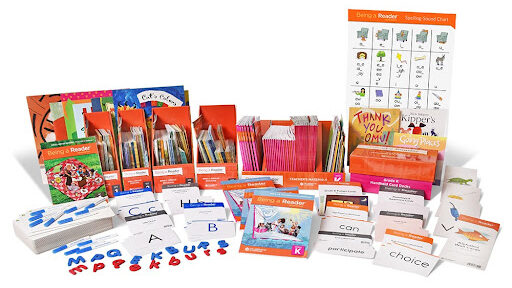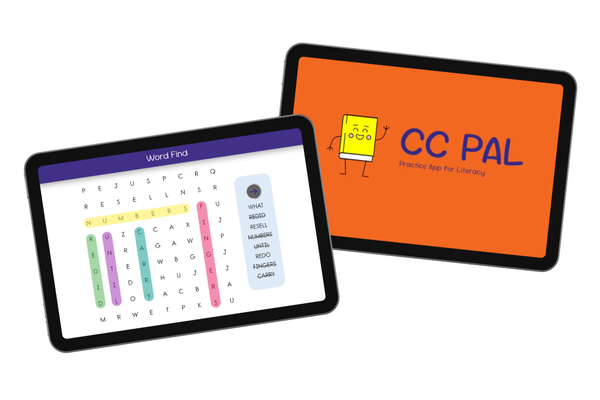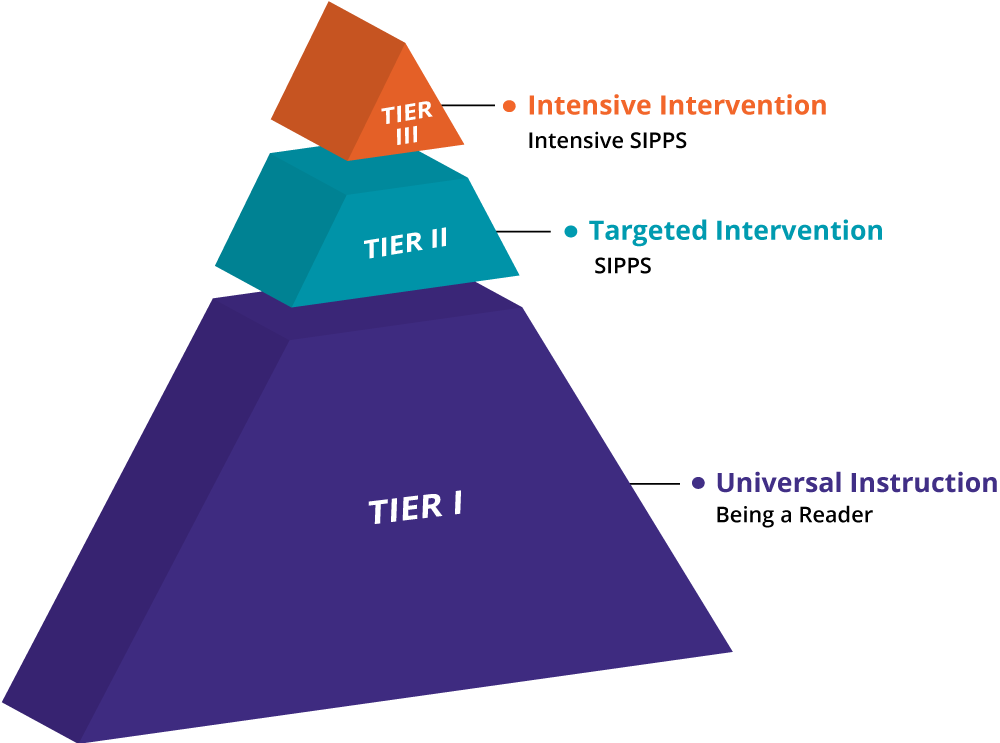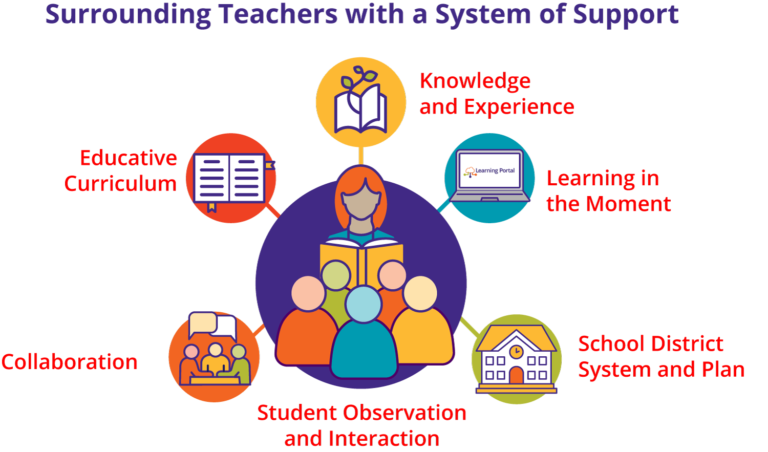A Unique Approach to Teaching Reading
A comprehensive K–5 reading program, Being a Reader™ is the first of its kind to integrate foundational skills instruction, practice in reading comprehension strategies, and rich literacy experiences with explicit social skills instruction and activities that foster students’ growth as responsible, caring, and collaborative people.
Being a Reader can be implemented as powerful, stand-alone Tier 1 instruction for grades K–5 or serve as a seamlessly integrated program within our comprehensive K–5 English Language Arts curriculum, Collaborative Literacy.

How It Works
Being a Reader follows a continuum of reading development to meet each student at their instructional point of need and take them to their next level of literacy.
Grounded in reading research, the program is informed by our many years of experience working alongside classroom teachers.
Each grade level includes either seven or eight instructional units organized around two instructional strands: Reading and Word Study.
The strands work together to develop comprehension, fluency, decoding strategies, word analysis, spelling, vocabulary, and independent reading. Progress monitoring and other assessment tools help teachers make informed, targeted instructional decisions to ensure reading success for every child.

Program Features
Research-Based and Standards-Aligned
Our pedagogy has grown out of years of research on reading development, vocabulary acquisition, best practices in reading and vocabulary instruction, and child development.
Rooted in the science of reading, the instruction in Being a Reader ensures that students acquire effortless and fluent word recognition while at the same time developing skills that support comprehension of complex text.
Explore research for our programs and use our correlation tool to download a comprehensive alignment to your state standards.
High-Quality, Authentic Fiction and Nonfiction
High-quality, authentic children’s literature is crucial to supporting effective literacy instruction and creating robust classroom communities.
Read-aloud texts in Being a Reader have been selected to systematically build knowledge and support the instructional focus of each lesson, while also ensuring wide appeal and representation.
Instructionally Aligned Independent Practice with CC PAL
Available separately, the CC PAL app gives students daily, targeted, independent retrieval practice aligned to their Being a Reader instruction. With “just-right” interactive practice activities and connected text reading, students get the engaging, effective practice they need for foundational skills mastery, while educators receive real-time progress tracking data.

Building Background Knowledge
Students consistently build their knowledge base and vocabulary through wide reading on a variety of topics, depth of classroom and peer discussions, and their reading selections in Individualized Daily Reading (IDR).
Selected units at each grade level use texts connected by a science or social studies related topic. Students learn to use comprehension strategies flexibly and see reading as the pathway to deeper understanding of the world around them.
Expand Your Classroom Library with the IDR Essential Collection
The Individualized Daily Reading (IDR) Essential Collection for grades K–5 includes texts that align with the topics, themes, genres, and text types covered in Being a Reader, allowing students to further explore and engage with texts they connected with during daily lessons.
Support for English Learners
An Implementation Handbook for each grade provides a variety of resources to support instruction and planning, including specific recommendations for ensuring English Learners (ELs) are able to access and succeed with grade-level content. Being a Reader lessons provide additional EL support:
- A pre-teaching section with suggestions for preparing students to participate confidently in the lessons
- Weekly extensions specifically designed for ELs to practice or deepen their understanding of a strategy or concept they’re learning
- Targeted EL margin notes within the lessons that allow teachers to implement suggestions for scaffolding instruction as they are teaching
Aligned with SIPPS for a Multi-Tiered System of Support
For students needing additional practice in developing phonics and decoding skills, SIPPS® and Being a Reader offer an aligned scope and sequence, facilitating a seamless transition for students moving between tiers.

Integrated Social Skills Development
Learning to question, analyze, think deeply about, and make meaning of text requires students to engage with others who can push their thinking. Successful literacy instruction depends on the students’ ability to form trusting relationships in the classroom, develop strong social skills, take risks, and work together.
Being a Reader includes:
- Explicit instruction students need to listen, talk to, and work effectively with peers
- Discussion prompts that help students agree and disagree respectfully, resolve conflicts, and reflect metacognitively on their interactions with others
Embedded Professional Learning
Being a Reader is an educative curriculum, constructed so that teachers expand their content knowledge and develop their pedagogical expertise every day as they engage with the program. Educators learn and deepen their practice as they teach.
Comprehensive Digital Resources
Each Being a Reader classroom package includes a license to the Learning Portal, which gives teachers access to digital manuals and allows them to:
- Manage program resources
- Download and print all student consumables and reproducibles
- Build and share paperless assessments and reports
- Get the very latest communications, updates, and instructional pacing notifications
NEW: CC AI Assistant is a generative AI-powered conversational agent that delivers immediate, personalized answers to implementation questions.
Professional Learning
For schools looking for additional implementation support, Collaborative Classroom offers a variety of in-person and virtual learning pathways including year-long or summer-specific learning plans that can be tailored as needed, and one-on-one virtual coaching with Collaborative Coach.

Related Resources
- Watch a Webinar
- View Brochure
- View Evidence Base
- Being a Reader Scope and Sequence
- White Paper: What’s Settled About the Science of Reading?
- Structured Literacy and the Being a Reader Program
- The Orton-Gillingham Approach and Being a Reader
- Literature Used in Being a Reader, Grade K-2
Related Blog Posts
- Bel Aire Park Magnet School: A Partnership in Teaching and Learning
- The Impact of Executive Function Skills on Literacy Learning: An Introduction
- How North Rose-Wolcott Central School District Is Succeeding with SIPPS and Collaborative Literacy
- Fueling Literacy Growth: Williamson Elementary Succeeds with Collaborative Literacy and SIPPS
Get Sample Lessons
Download sample lessons, placement assessments, and the Being a Reader program preview.